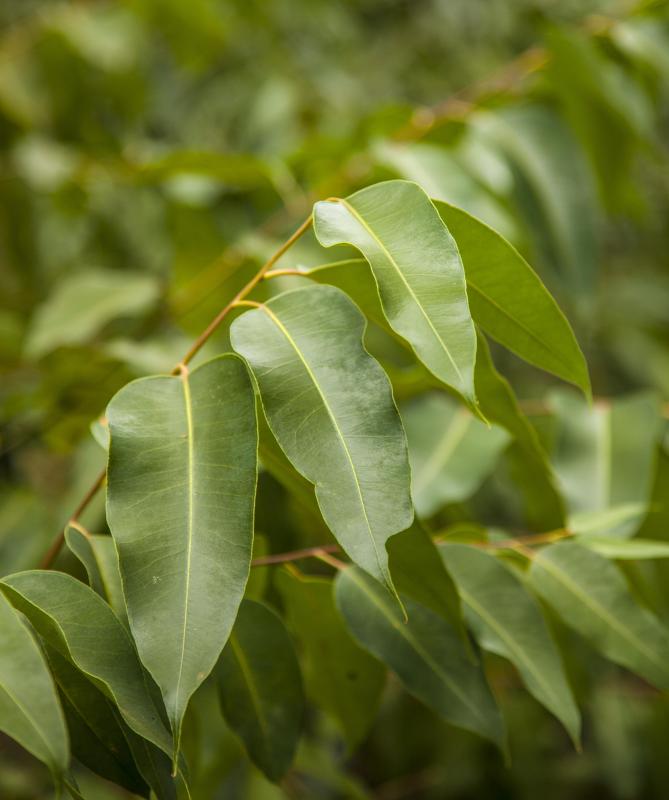At AllThingsNature, we're committed to delivering accurate, trustworthy information. Our expert-authored content is rigorously fact-checked and sourced from credible authorities. Discover how we uphold the highest standards in providing you with reliable knowledge.
What is a Koala?
The koala is a tufted-eared marsupial, with its primary habitat in Australia. Some have been relocated to islands surrounding Australia, but most make their home in Eastern Australia. Evidence of koala populations in other parts of Australia exists, but most lost their habitat due to increased building and human encroachment on habitat. It is now considered a threatened species.
The koala is arboreal, which means they live in trees. They also have a slow metabolism, which is the reason they spend almost 20 hours of the day sleeping. At birth, they are minuscule, about the size of a jellybean. They also lack their trademark fluffy ears and eyes.

At about six months, the baby koala more resembles a mature one, and ventures out of the pouch to eat its mother’s excreted and digested eucalyptus. By a year, the baby will spend most of its time outside the pouch, and eat the primary diet of eucalyptus leaves, and occasionally bark.
A full-grown koala may be about 17 pounds (7.71 kg), though this varies according to sex. The adult is about 2 to 3 feet (0.6 - 0.91m). Males are larger than females.

The koala will reach sexual maturity at about two to three years of age, and the female will have about 12 babies in a lifetime, each born singly. Koalas in the wild live approximately 15-18 years. In addition to the large ears, they have a large brown to black nose. They have dense grey to grey-brown fur, with white or cream markings.
The animal's fur made them attractive to hunters who pushed the species to near extinction by overhunting. This practice stopped in the mid-20th century and efforts were made to preserve the remaining species. These efforts have been fairly successful, though their threatened status is still a concern because of habitat loss.

Koala populations have also suffered where they have been relocated. The population on Kangaroo Island has led to extreme overpopulation and illness. While efforts are underway to curb population expansion, overwhelming community support for the koala will not allow the animals to be killed. Relocation back to the mainland of Australia has not been successful. Strategies for reducing population currently involve shooting hormone filled darts at females to prevent reproduction.
The koala cannot be called an exceptionally intelligent animal. It has a very small brain that only occupies about 40% of its cranial cavity. On a typical day, it eats, sleeps and takes care of its young. Though it has tremendous visual appeal, approaching a wild one is not recommended. They can be quite grumpy, and their sizable claws and strong bite are to be avoided. As well, members of the mainland population may suffer from chlamydia, which could be transmitted through a bite.
Though the koala is often called a koala bear, it is not related to bears. One of its main distinctions from bears is that it is a marsupial. It has a much closer relationship to the wombat, and other marsupials of Australia and Tasmania.
Frequently Asked Questions
What exactly is a koala and where can it be found?
A koala is a marsupial native to Australia, known for its distinctive teddy bear-like appearance. They inhabit eucalyptus forests primarily in the eastern and southern regions of the continent. Koalas are arboreal, spending most of their time in trees, and are especially populous in areas like Queensland and New South Wales.
What do koalas eat and how does this affect their behavior?
Koalas have a highly specialized diet, feeding almost exclusively on eucalyptus leaves, which are tough and fibrous. This diet requires a slow metabolism to digest, leading to their sedentary lifestyle. Koalas spend up to 20 hours a day sleeping to conserve energy, a necessity given the low nutritional value of their food.
How do koalas reproduce and raise their young?
Koalas reproduce by giving birth to underdeveloped young, which crawl into their mother's pouch to continue developing. A newborn koala, called a joey, is blind and earless at birth and about the size of a jellybean. It remains in the pouch for about six months before venturing out, though it may continue nursing for another six months.
Are koalas endangered and what are the threats to their survival?
Koalas are listed as vulnerable to extinction, with their populations declining due to habitat destruction, climate change, and diseases like chlamydia. Bushfires also pose a significant threat, as seen in the devastating 2019-2020 Australian bushfires, which killed or displaced an estimated 30% of the koala population in New South Wales, according to the World Wildlife Fund.
How do koalas communicate with each other?
Koalas communicate through a range of vocalizations, from snores to bellows. Despite their quiet demeanor, they can produce surprisingly loud and deep sounds, especially during the breeding season. These vocalizations are used to establish territory, attract mates, and express distress or aggression.
What conservation efforts are in place to protect koalas?
Conservation efforts for koalas include habitat preservation, rehabilitation programs, and research into diseases affecting them. Organizations and governments are working to plant eucalyptus trees, create wildlife corridors, and manage urban development to reduce habitat fragmentation. Additionally, there are initiatives to control domestic dog populations and improve road safety to prevent koala injuries and deaths.
AS FEATURED ON:
AS FEATURED ON:













Discussion Comments
According to my Snapple cap, only two animals have unique fingerprints -- humans and koalas!
Post your comments